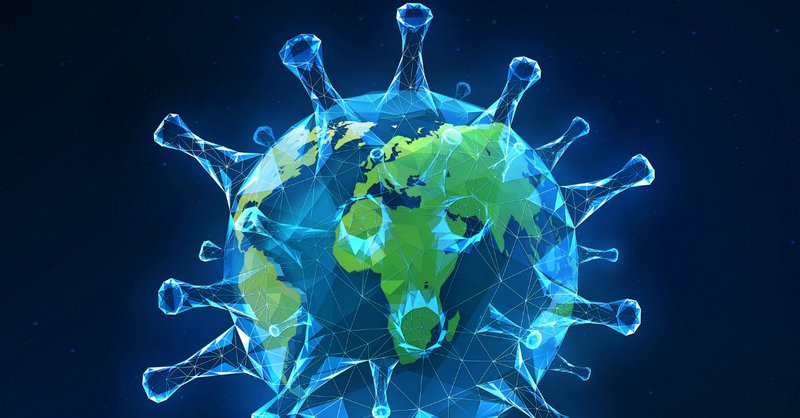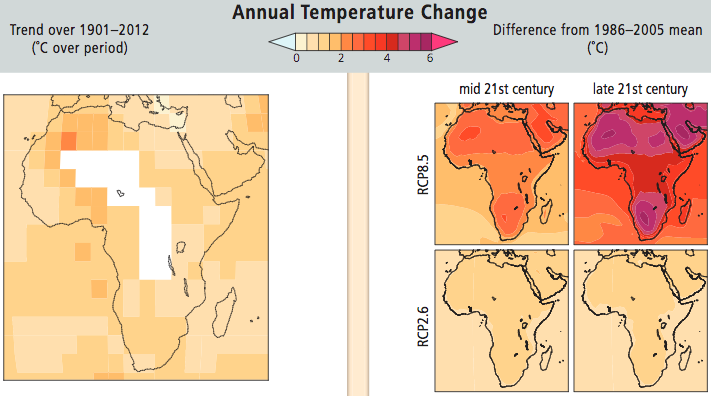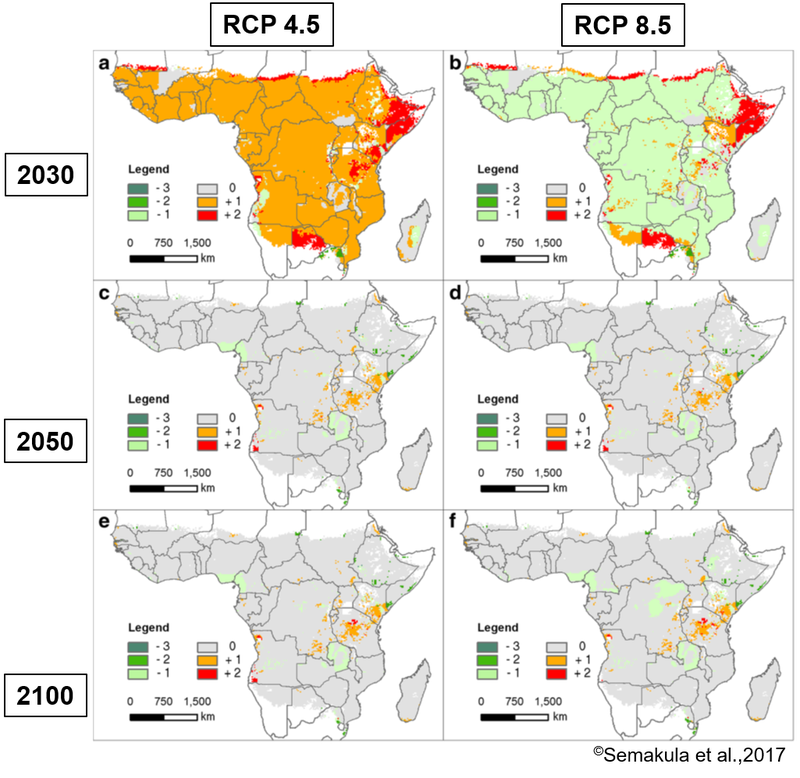Rethinking Climate Change and its Impacts on Health in Eastern Africa in light of the COVID-19 Pandemic: Part 1
Lead Author: Dr Esther Onyango, Environmental Futures Research Institute at Griffith University, Australia
Contributions by ICPAC Climate Change Technical Working Group

COVID-19 is a stark reminder of the size of the human ecological footprint on the planet and how interconnected we are. Environmental destruction through poorly planned infrastructure development, over-exploitation of natural resources, unsustainable agricultural practices, and other activities, leads to habitat loss, biodiversity loss, alters species distribution and puts humans in close contact with wild animal habitats. David Quammen in a recent article in the New York Times, Animal Infections and the Next Human Pandemic, states “We invade tropical forests and other wild landscapes, which harbour so many species of animals and plants — and within those creatures, so many unknown viruses. We cut the trees; we kill the animals or cage them and send them to markets. We disrupt ecosystems, and we shake viruses loose from their natural hosts. When that happens, they need a new host. Often, we are it.” In short, our negative impacts on the environment is creating conditions that make it suitable for new diseases to jump from animals to humans. Diseases know no boundaries and can quickly spread around the world due to human interaction.
In chaos theory there is a phenomena known as the “butterfly effect”, as advanced by Edward Lorenz, which suggests a small event can have a non-linear impact at a later stage on a complex system. For example, the exact time of formation and the exact path taken of a tornado, being influenced by the flapping of a distant butterfly’s wings several weeks earlier. It would be incorrect to link a single event such as the flapping of a butterfly’s wings to causing a tornado; nonetheless small events can serve as a catalyst that impact on the starting conditions.
In December 2019, an initial cluster of patients presenting with flu-like symptoms was identified and has exponentially expanded to what could be one of the worst pandemics of the 21st century. The world is grappling with a new virus, severe acute respiratory syndrome coronavirus-2 (SARS-CoV-2) or more popularly known by its disease name, COVID-19. The disease is currently (as of 8th May, 2020), responsible for approximately 3.7 million cases globally and 250,000 deaths. COVID-19 joins a long list of diseases caused by viruses that have jumped from animals to humans often as a result of human activities, with profound economic and health impacts globally. Some notable ones are HIV/AIDS, Ebola, SARS, MERS and Zika. All of these diseases are thought to have been initially caused by infectious pathogens jumping from animals to humans. The unfortunate news is that we will continue to see more emerging diseases as we continue with our practices of environmental degradation. The health and wellbeing of humans is inextricably linked to the health and well-being of our planet.
With a projected world population of 9.7 billion by 2050, there will be more demand for food, putting more pressure on ecosystems. Deforestation and agriculture are some of the biggest contributors to global greenhouse gas emissions, which is accelerating global warming. The world is on a trajectory to exceed 1.5° C of warming over pre-industrial levels by 2030. Climate change is a risk multiplier for existing and emerging health threats.
The evidence linking COVID-19 to climate change is still in its infancy, however we do know that in general, respiratory viruses such as influenza, are influenced by temperature and humidity and can survive longer at lower temperatures and lower humidity. Based on this information we can therefore hypothesise that climate may influence the distribution of novel viral diseases such as COVID-19. In an increasingly warmer world, we will see changes in the distribution and spread of existing diseases and increasing incidences of new diseases, such as COVID-19 all linked to human impacts on the environment.
These risks are amplified in sub-Saharan Africa, which is warming faster than global average.

In addition, rates of deforestation and agriculture will rise under different climate conditions to meet the needs of increased food and water security. The population in the region is also expected to double by 2050, which will put even more pressure on ecosystems from expanding settlements and infrastructure development. The evidence already shows that rising temperatures are creating conditions that facilitate the spread of malaria into the East African highlands to populations who have little to no immunity as shown in diagram 2 below. Increase in water-borne diseases such as cholera and typhoid have been linked to climate change, and projected higher temperatures will lead to more incidences of heat stress and heat-related deaths. The Eastern Africa region, therefore, is primed to be the focal point of the next crisis.

References
- Climate Change and Africa’s Future https://hvr.co/35CBht0
- An integrated risk and vulnerability assessment framework for climate change and malaria transmission in East Africa https://bit.ly/2Wu2ry8
- Emerging Infectious Diseases https://bit.ly/2L6YytR
- World Population Prospects 2019: Highlights https://bit.ly/2YIaVnW
- Butterfly effect https://bit.ly/35Eu3oe and https://bit.ly/2YIPbZ1
- Roles of Humidity and Temperature in Shaping Influenza Seasonality https://bit.ly/2La2j1n
